|
Beginnings
The Wolverhampton car manufacturer
Star, based in Frederick Street, began producing
commercial vehicles as early as 1902. The first van was
built on their standard car chassis, and could of carry
a load of 6 cwt. It was said to be the first van to have
a totally enclosed cab, although few can have been
sold. It was also the first of many commercial vehicles,
including passenger vehicles, to be built by
Star.
Shortly before the
First World War, Star began building charabancs on its
standard commercial chassis. The photograph below, taken
in 1914 shows a Star charabanc filled to capacity. |
|
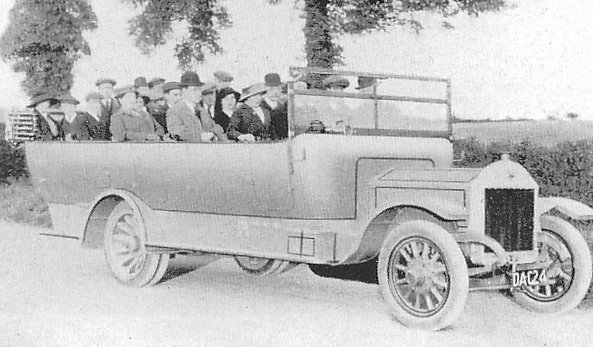
Courtesy of the late Jim Boulton. |
|
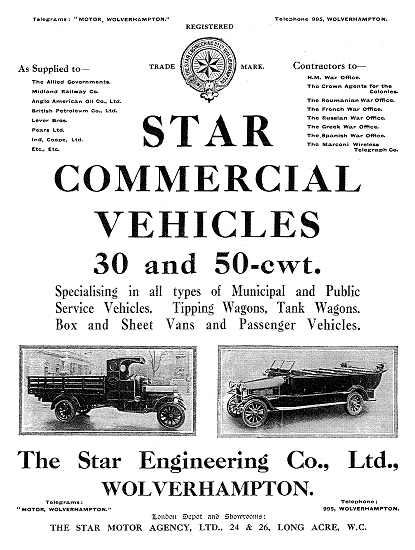
An advert from 1919. |
Charabancs were very popular in the 1920s. They were
the first affordable, and comfortable means of transport
for many groups of people, which allowed them to travel
long distances on day trips. Something that was very
difficult to achieve with horse-drawn vehicles. For
many years the basic design changed little. It was a
cold and draughty experience for the passengers, many of
whom must have tightly hung on to their hats, in fear of
loosing them.
In 1927 Star launched the
'Flyer', a fast chassis, initially intended for use as a
low-loading passenger vehicle, but also available for
use as a van or lorry. It had side and back windows, and
a fixed or removable roof.
It was powered by a 3.2 litre,
6-cylinder overhead valve engine, and equipped with
vacuum servo brakes. It sold for £645 and proved to be
quite popular. |
| A close-up view of the
charabanc in the advert above. |
 |
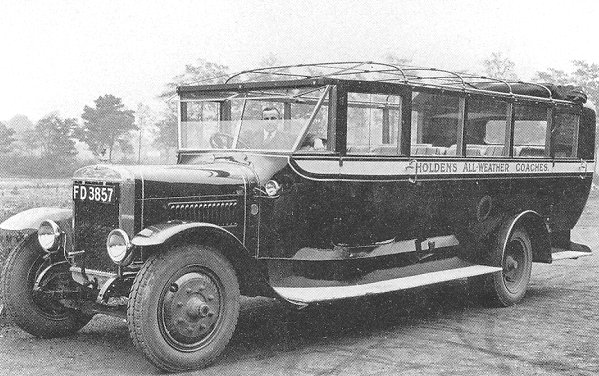 |
An early flyer, operated in
1927 by Holdens of Netherton.
Courtesy of the late Jim Boulton. |
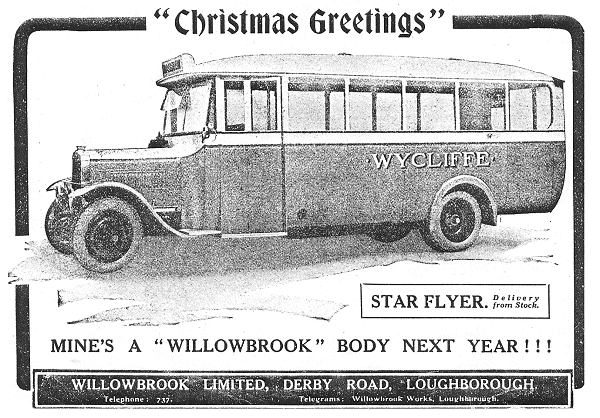
An advert from 1928 which shows a model with a
fixed roof.
|
The Later Years
Production at the factory peaked
between 1921 and 1925, when around 1,000 vehicles of all
kinds were built each year. By the time of the General
Strike in 1926, Star cars had become extremely
expensive, compared with the competition. This would
eventually lead to the company’s downfall. In 1927 only
105 cars left the factory.
By 1928 with production still
falling, Star found itself in a precarious financial
position. The company was rescued by Guy Motors, which
took control through an exchange of shares, though Star
continued in existence as a separate company, now called
The Star Motor Company Limited. The reason for the
take-over is uncertain. It is possible that Guy wanted
to re-enter the luxury car market, or to acquire Star's
most successful commercial vehicle at the time, the
'Flyer', or even simply to acquire a competitor.
One of the first major changes at
the Guy/Star company took place in 1929 with the closure
and sale of Star's Frederick Street factory, and a move
to the Showell Lane works, which had been built in 1920
and used as a body shop. Vehicles could now be built
under one roof, but the workforce was reduced to around
250, and Guy dropped some of Star’s heavier commercial
vehicles, that were in direct competition with its own
products.
|
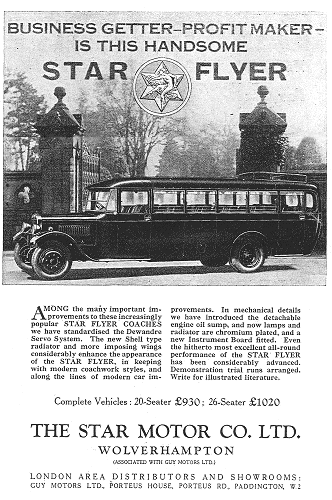
An advert from 1930. |
| Under Guy, the cars retained their
quality build and high levels of workmanship, but they
were far too expensive for most people. 1930 saw the
introduction of the ‘Comet’, ‘Planet’ and ‘Jason’
series. 1931 saw the introduction of another new model,
the 'Little Comet Fourteen', and two models with fabric
bodies. Unfortunately a small loss was made
on the sale of every vehicle, and Guy Motors found
itself in financial difficulties due to the recession,
and couldn't afford to equip the Bushbury factory with
up-to-date machinery. Star found itself in a desperate
situation, which resulted in the appointment of a
Receiver in March 1932. Spares and manufacturing rights
were obtained by McKenzie and Denley, of Birmingham, who
continued selling spares and servicing Stars into the
1960s. The Frederick Street factory was sold to James
Gibbons (Windows) Limited, and later to Chadd Castings
Limited, which cast aluminium components for a variety
of uses, including vehicle parts for companies such as
Rolls Royce, Leyland DAF, Rover and Land Rover. The
Bushbury factory was sold to Manley & Regulus, makers of
plumbing fittings, and later acquired by Delta Metals. |
 |
Return to the list
of manufacturers |
|
|